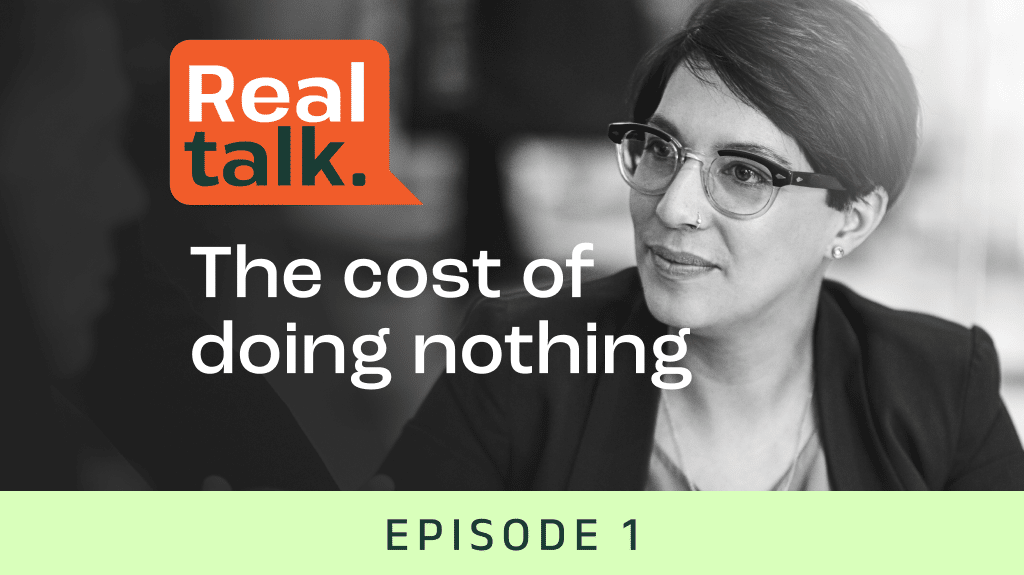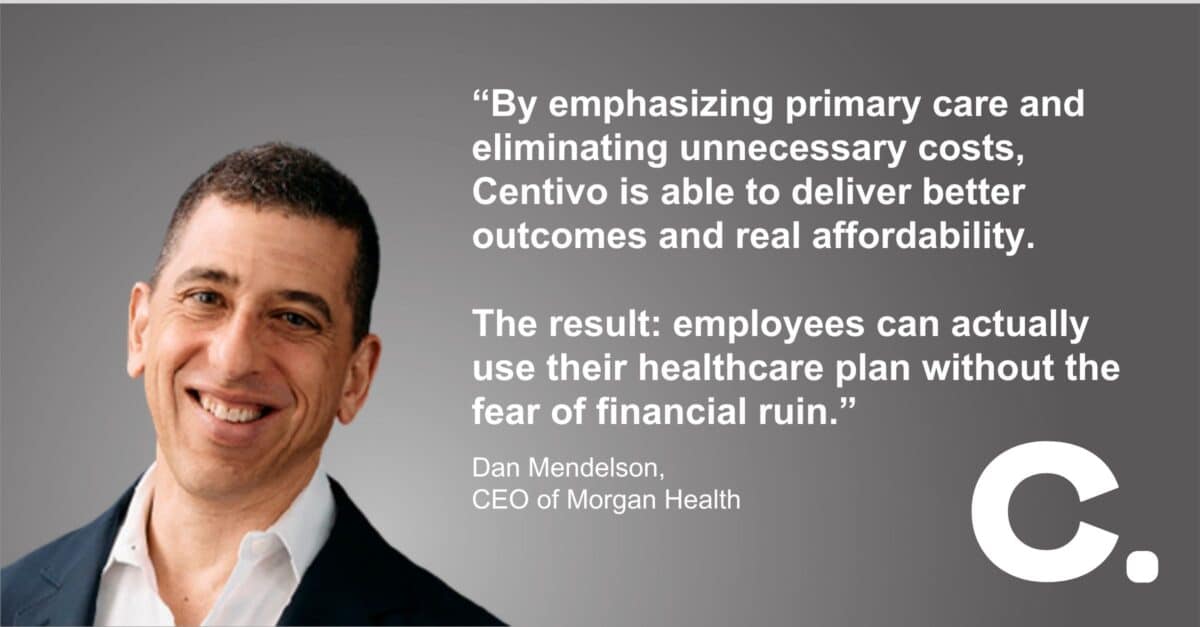Every year around this time, we see the same familiar pattern: spreadsheets, rate hikes and, frankly, resignation.
Employers brace for double-digit increases. Brokers juggle carrier quotes and carveouts. Everyone’s exhausted, and someone inevitably says, “Let’s just get it done.”
But here’s the uncomfortable truth: when there’s sign off without asking questions, it’s not renewing, it’s surrendering.
That’s what we covered in Real Talk Episode 6 — Renewal Reality Check with Rivka Friedman of Morgan Health and Peter Bridges of AccessHope.
Together, we took a look at what employers and brokers can still do before contracts are finalized to make change – not next year, not “someday,” but right now.
Affordability isn’t mysterious — it’s math, design and outside-the-box thinking
We tend to talk about healthcare costs as if they’re acts of nature – unpredictable and unstoppable. But much of affordability comes from how a plan is built and managed, not from luck or size.
As Rivka Friedman from Morgan Health spoke to on the call, the biggest driver of cost isn’t how much care people use – it’s how much we pay for the same care. A single procedure can cost three or four times more depending on where it’s performed, with little to no difference in quality. That price variation is what’s pushing costs higher year after year.
And it’s made worse by a lack of transparency and access. Most employees have no way of knowing what something costs until after the bill arrives, and too many face roadblocks to establishing a trusted primary care relationship. Without that anchor, they’re left to navigate a system that rewards volume over value.
That’s not a utilization problem – that’s a system design problem.
Plans that prioritize unit price and center advanced primary care – giving easier access, clear pricing and coordinated care – guide people toward higher-value decisions and healthier outcomes.
Employers of every size can start there in asking:
- Are our employees connected to a consistent primary care relationship?
- Are we rewarding that behavior through plan design?
- Do we know what drives our costs and what’s actually within our control?
Transparency isn’t a luxury; it’s an imperative for driving change.
Small and mid-sized employers have more power than they think.
I hear this from mid-market leaders all the time: “We’d love to do something different, but we’re not big enough to influence pricing or negotiate directly.”
That’s an understandable instinct but it’s also outdated.
You don’t need scale to drive accountability. You need clarity – and, frankly, the right partners.
As Peter Bridges highlighted, smaller employers can make meaningful progress by leaning on health plan partnerships that already integrate proven, high-value programs into the benefit. Solutions like specialty care navigation or advanced primary care don’t require massive infrastructure or multi-year pilots. When they’re built into the plan, they’re turnkey, giving smaller employers access to the same expertise and savings once reserved for the Fortune 500.
For many small and mid-sized employers, this year’s renewal should serve as the starting point for a longer roadmap toward affordability; one that prioritizes transparency, relationships and value.
The first step is knowing where your money goes. Review the data you already have – claims reports, high-cost drivers, disease patterns – and use it to ask better questions:
- What are our top spend categories?
- Where are our employees getting care?
- How does our plan design influence those choices?
Those questions spark accountability and accountability is what kickstarts change.
Large employers: use your leverage wisely.
For jumbo and national accounts, the issue isn’t leverage, it’s focus. Buying power is spent chasing access instead of outcomes.
Large employers can shift that by focusing their influence on what actually moves the market:
- Transparency and accountability in pricing and performance.
- Payment models tied to value, not volume.
- Simplified access through integrated primary and specialty care.
As Rivka said, employers pushing hardest on accountability are proving that meaningful change doesn’t require a new system. It requires the resolve to ask harder questions and expect better answers.
For brokers and advisors: lead, don’t translate.
Brokers are in a tough spot right now. The market is volatile, the workload is crushing and everyone wants a quick fix.
But this is also the moment when true advisors stand out.
Employers don’t need another renewal spreadsheet. They need perspective. Someone who can connect data, design and decision-making into a clear path forward.
The brokers winning trust right now are the ones showing up with:
- Evidence. Real data on high-cost drivers and utilization trends.
- Options. Integrated, value-based structures that replace bolt-ons with built-in results.
- Conviction. The willingness to challenge the default % increase.
That’s not selling. It’s leading.
Integration is how innovation actually works.
We all want to make benefits more affordable, but the way most pursue “innovation” has created fragmentation instead. Each new point solution adds another app, another vendor, another confused employee experience.
As Peter explained, the employers seeing the greatest impact are the ones that make innovation invisible, integrating specialty expertise within the health plan instead of layering it on top.
Through AccessHope, members facing complex cancer diagnoses can be seamlessly connected to world-class specialists for second opinions and evidence-based care guidance without leaving their existing doctor or navigating a new vendor process. It’s integration that enhances care, not complication.
Embedding programs through the health plan makes advanced clinical expertise available to any employer, large or small, without disrupting existing structures or adding operational burden.
It’s the same philosophy behind Centivo’s advanced primary care model: start with the right foundation, then integrate the right partnerships – not pile on more products.
Cost trends stabilize, employees make better decisions the first time, and HR teams spend less time managing vendors and more time managing outcomes.
And that’s how affordability lasts.
Accountability + Integration = Control.
When you combine accountability (knowing what you pay for) with integration (making sure care and cost work together), you get something rare in healthcare: control.
This is the common thread across every Real Talk conversation: affordability isn’t luck. It’s structure, discipline and intent.
For employers:
- Demand accountability. Ask for proof, not promises.
- Press your broker. Expect data and real alternatives.
- Favor integration. Simplify, don’t stack.
For brokers:
Lead those conversations. Bring the proof. Challenge your clients to expect more from their plan, their partners and themselves.
This is the moment to act.
Everyone’s busy. Budgets are tight. Renewal fatigue is real. But every renewal is an opportunity to choose differently – to make affordability a design decision, not an afterthought.
Because the real question this season isn’t “What’s our renewal increase?”
It’s “What are we doing to make healthcare make sense – for our business and our people?”
Watch Real Talk 6: Renewal Reality Check
See the full conversation with Rivka Friedman of Morgan Health and Peter Bridges of AccessHope and learn what employers and brokers can still do before Jan 1.


